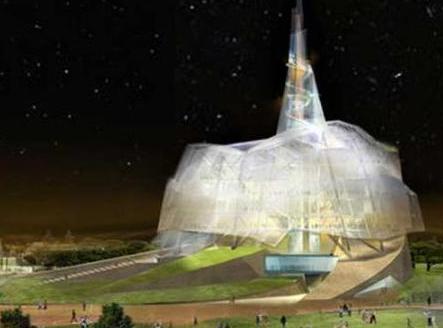WINNIPEG — The man who first planned to build the Canadian Museum for Human Rights in Winnipeg died more than a decade before it opened.

We outline 10 years of planning, building and controversy that has gone into Canada’s only national museum outside of the National Capital Region:
July 2000 — Winnipeg media magnate and philanthropist Izzy Asper pitches the idea of a “tolerance” museum in Winnipeg to the federal government. The idea is based partly on a similar museum in Los Angeles that examines racism and atrocities such as the Holocaust.
April 17, 2003 – Asper announces his intent to build a place to educate people about the struggle for human rights around the world. The museum was a longstanding dream of Asper, who wanted a national museum built outside the nation’s capital.
Oct. 7, 2003 — Asper dies. His daughter Gail picks up his dream to establish a human rights museum in Winnipeg.
October 2003 – Fundraising begins in earnest. Original estimates peg museum costs at “approximately $200 million,” with a completion date of 2007.

December 2003 – After an international competition, Antoine Predock of New Mexico is selected as the building’s architect. At 21,154 square metres, the museum will include almost a kilometre of bridges that will take visitors on an “enlightening” tour that culminates at the top of a 24-metre-high Tower of Hope.
April 2005 – All three levels of government announce they will contribute to the project: $100 million from the federal government (plus $21 million in annual operating costs), $40 million from the province of Manitoba and $26 million from the City of Winnipeg. Another $100 million will come from private donors. The Canadian Museum for Human Rights will be the first museum constructed outside of the National Capital Region and the first national museum built since 1967.
2007 — Museum says capital costs are $265 million.
Dec. 19, 2008 – Groundbreaking ceremony takes place, although construction doesn’t begin in earnest until April 2009.
May 2009-February 2010 – In a series of focus groups and meetings, thousands of Canadians in 19 different cities are asked what they would like to see in the museum.
- Budget 2024 failed to spark ‘political reboot’ for Liberals, polling suggests
- Train goes up in flames while rolling through London, Ont. Here’s what we know
- Peel police chief met Sri Lankan officer a court says ‘participated’ in torture
- Wrong remains sent to ‘exhausted’ Canadian family after death on Cuba vacation
2010 – Controversy erupts following reports the main gallery will feature only two permanent exhibits: the Holocaust and the mistreatment of aboriginal peoples in Canada. The Ukrainian Canadian Congress is one of several organizations to express concern this will minimize other atrocities. It seeks the inclusion of the Holodomor, a man-made famine at the hands of Stalin that lead to the deaths of millions in Ukraine. The museum says the Holodomor is one of several exhibits that will be included.
February 2011 – After three years on the job, chief operating officer Patrick O’Reilly resigns. The following month, chief knowledge officer Victoria Dickensen resigns.
October 2011 – The CMHR surpasses its private fundraising goal with more than $130 million raised through some 5,000 donors.
December 2011 – Capital costs hit $350 million.
July 2012 – The provincial and federal governments say they will help make up the difference in costs with $70 million in guaranteed loans.
September 2012 — The last pane of glass is placed on the museum’s Tower of Hope.
October 2012 – Questions are raised after an investigation by Global News reveals clothing sold by the CMHR may have been produced in factories with poor working conditions. Despite calls from organizations such as the Worker Rights Consortium for the museum to lead by example, the CMHR defends the merchandise, saying due diligence was used in sourcing the items.
July 2013 – Aboriginal groups express “outrage” over the decision to not apply the term genocide to exhibits on the mistreatment of aboriginals in Canada. The CMHR says it will not use genocide in the exhibit title but will use the term in the exhibit “when describing community efforts for this recognition,” adding, “Historical fact and emerging information will be presented to help visitors draw their own conclusion.”
Nov. 4, 2013 — President and CEO Stuart Murray announces the museum will open on Sept. 20, 2014. The cost has risen to $351 million.
June 6, 2014 — Museum officials announce the prices for tickets will be $15 and less.
August 2014 — Plans for an inclusive opening ceremony prove contentious. The Manitoba Metis Federation threatens to boycott the museum after officials reject the federation’s request to have country singer Ray St. Germain perform.
Sept. 3, 2014 — Demand for 9,000 free tickets for the museum’s opening weekend is so great it crashes the museum website.
Sept. 20, 2014 — The Canadian Museum for Human Rights, the first national museum outside the National Capital Region, opens in Winnipeg.



Comments